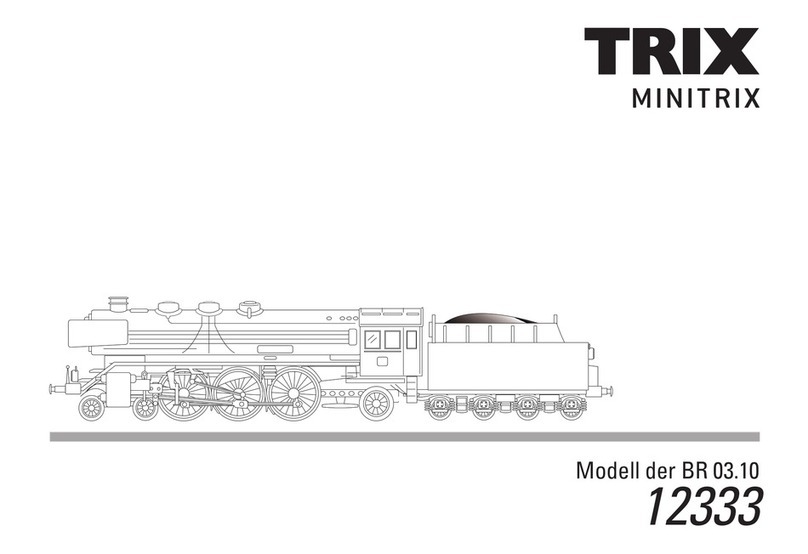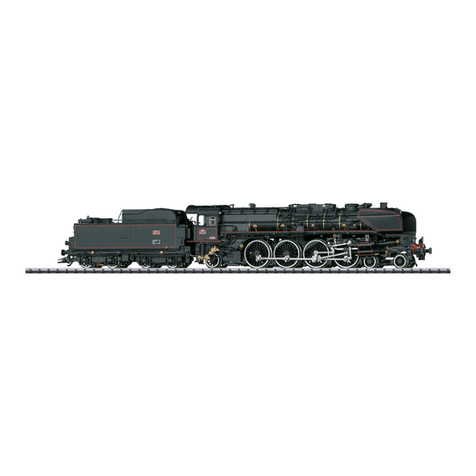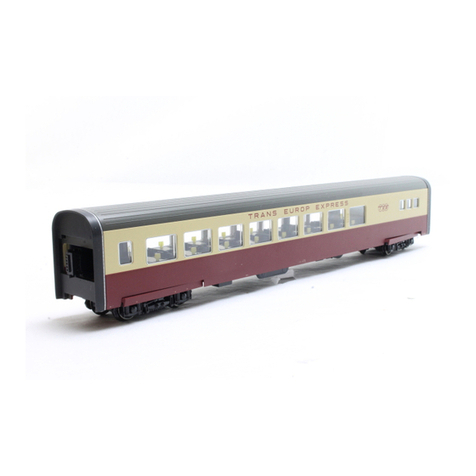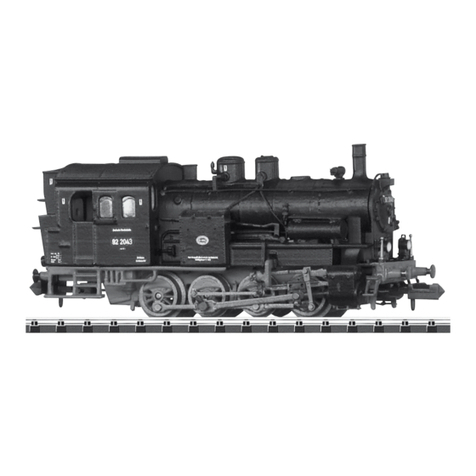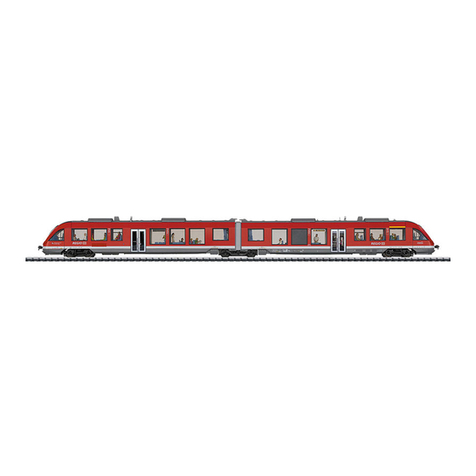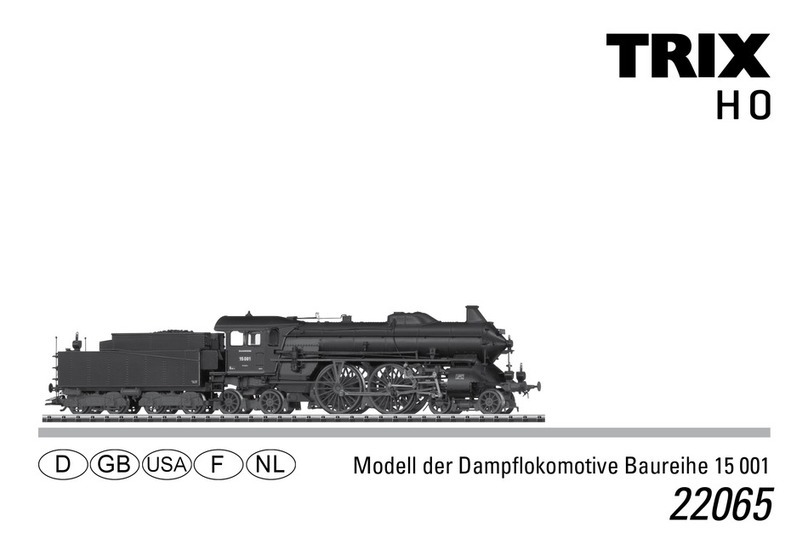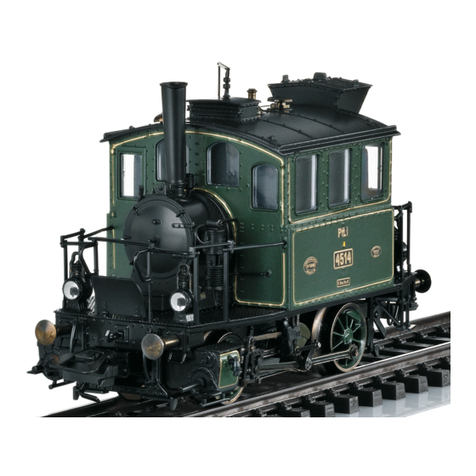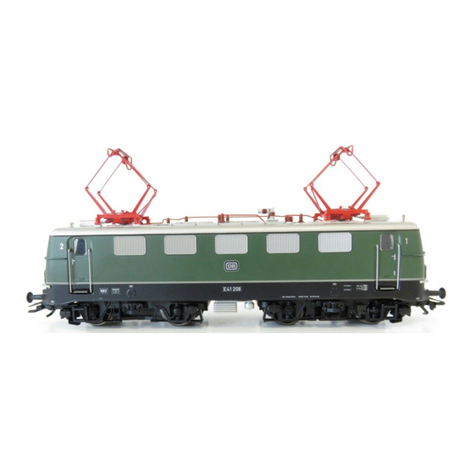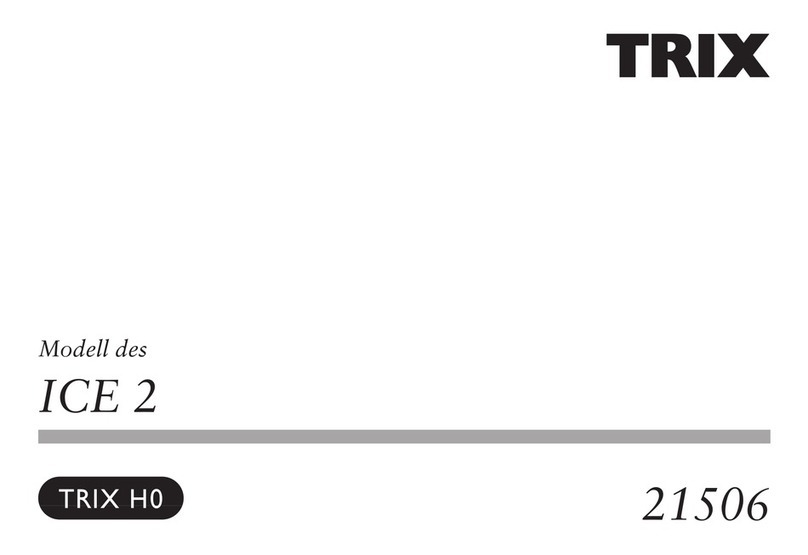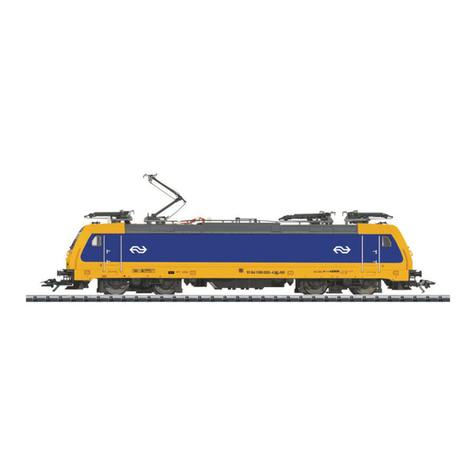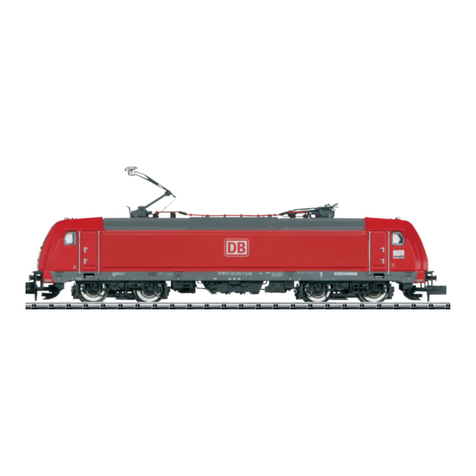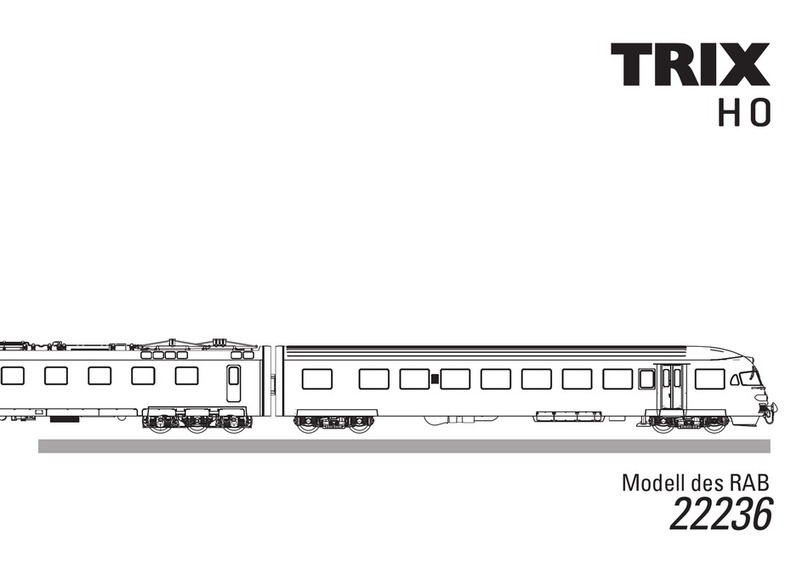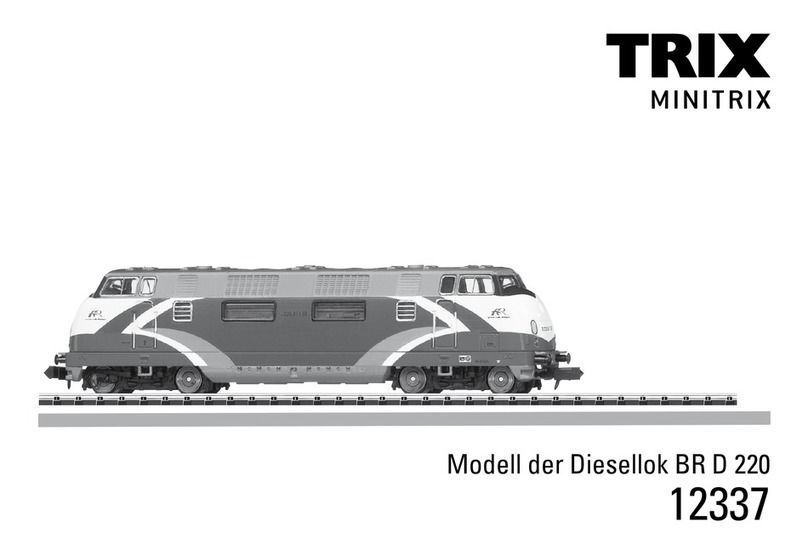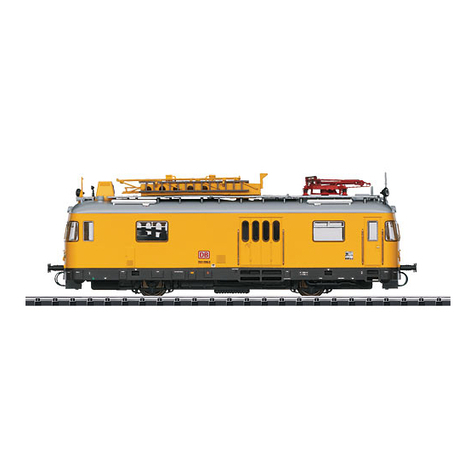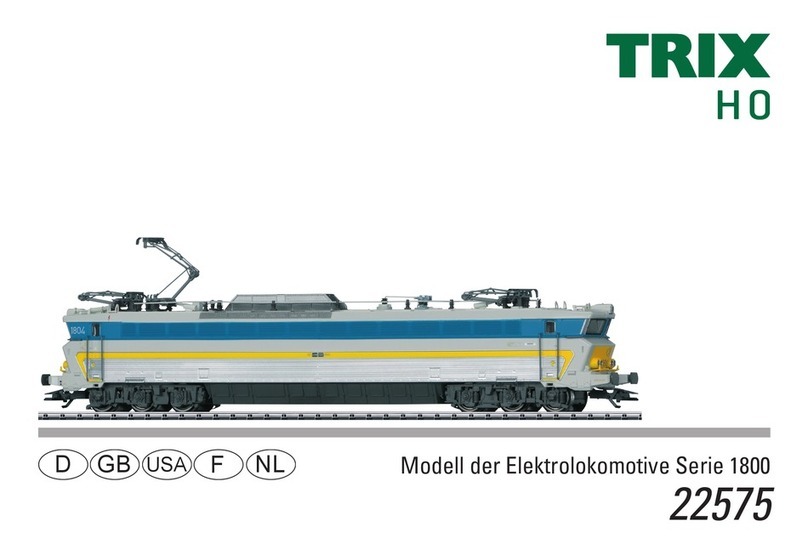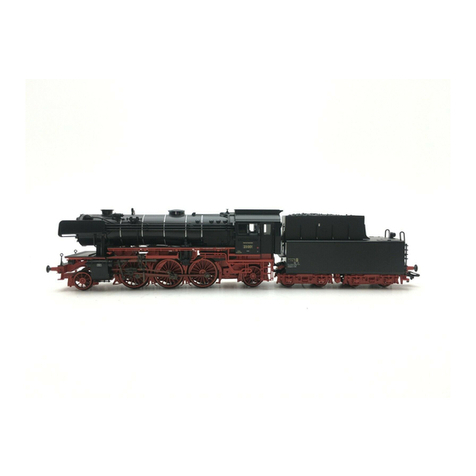4
Informationen zum Vorbild
Die E 50 war in erster Linie für den schweren Güterzugver-
kehr auf steigungsreichen Strecken konzipiert, weshalb sie
Beföderungsleistungen erbringen sollte, die größer waren als
alle bislang in Deutschland gebauten E-Loks. Eingebettet in
das Gesamtprogramm der Entwicklung der neuen Einheits-
E-Lok-Baureihen wurde die Federführung bei der E 50 an das
Firmenkonsortium Krupp/AEG übergeben.
Die hohen Leistungsanforderungen konnten nur durch eine
gegenüber den anderen Einheits-E-Loks entsprechend groß-
zügige Dimensionierung der wesentlichen Bauteile erreicht
werden. Insbesondere der Transformator und die Lüfter
beanspruchen bei der E 50 mehr Raum. Damit die Achslast
von 21 t nicht überschritten wurde, mussten dreiachsige
Drehgestelle eingebaut werden. Die langen Drehgestelle
bedingen eine größere Länge des Brückenrahmens,
wodurch die E 50 rund 3 Meter länger als die E 10/E 40 ist.
Die Inbetriebnahme der ersten Loks erfolgte ab April 1957;
die letzte E 50 wurde im Juli 1973 dem Betrieb übergeben.
Insgesamt wurden 194 Loks gebaut.
Der technische Fortschritt machte ab dem Jahrtausendwech-
sel mit der Inbetriebnahme der E-Loks der Baureihen 152 und
185 auch vor der E 50/150 nicht Halt. Im Jahre 2003 wurde die
letzte 150 ausgemustert. Lediglich zwei Exemplare sind als
Museumslokomotiven der Nachwelt erhalten geblieben.
Achsfolge Co‘Co‘
Länge über Puffer 19.490 mm
Dienstmasse 126 t
Leistung 4.500 kW
Höchstgeschwindigkeit 100 km/h
Baujahr ab 1957
Wheel arrangement C-C
Length over the buffers 19,490 mm
Service weight 126 metric tons
Power 4,500 kilowatts
Maximum speed 100 km/h / 88 mph
Built starting in 1957
Information about the Prototype
The E 50 was designed first for heavy freight service on
steeply graded routes; hence, it was supposed to provide
performance that exceeded all electric locomotives
previously built in Germany. Embedded in the total program
of development for the new standard design electric loco-
motives, the lead management for the E 50 was given to the
consortium of Krupp/AEG.
The higher performance requirements could only be
achieved with appropriately larger designs of the essential
components compared to the components for the other
standard design electric locomotives. The transformer and
the blower motors in particular required more room in the E
50. Three-axle trucks had to be installed so that the axle load
of 21 metric tons was not exceeded. The long trucks meant
that the frame for the body had to be longer, so that the E 50
was about 3 meters / approximately 10 feet longer than the
E 10 / E 40. The first units were placed into service beginning
in April of 1957; the last E 50 locomotive was placed into
service in July of 1973. A total of 194 locomotives were built.
The technical progress on the E 50/150 did not stop at the
turn of the century with the class 152 and 185 electric lo-
comotives being placed into service. In 2003, the last of the
class 150 was taken out of service. Only two units remain
preserved as museum locomotives for future generations.
